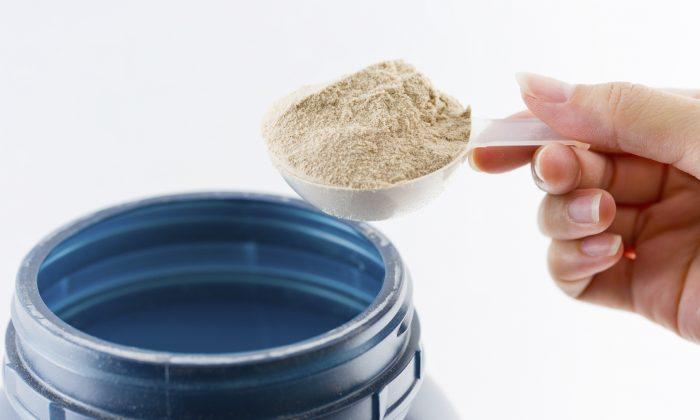When milk curdles in the initial stages of cheese-making, whey is the liquid that separates from the solid curd. The ancient Greek physician Hippocrates used whey as a medicine to provide strength and vigor. Other dairy-loving cultures also saw whey’s value as a therapeutic food.
Until recently, the dairy industry considered whey a waste product. But whey’s reputation changed dramatically in the late 1970s, when research by Dr. Gustavo Bounous at Canada’s McGill University revealed whey to have some very beneficial health properties.
Bounous discovered that mice fed a whey concentrate saw improved immunity to disease. The star player in whey’s immune-boosting power was found to be an antioxidant called glutathione. In the 1980s, researchers discovered glutathione to be an essential component for cell development and for clearing toxins from the body.
Glutathione is so important to health that a lack of it can lead to premature aging, heart disease, cataracts, macular degeneration, multiple sclerosis, infertility, Alzheimer’s, Parkinson’s, autism, chronic fatigue, cancer, and other diseases. For those suffering from AIDS and other autoimmune diseases, glutathione is especially helpful in maintaining strong immunity.
Getting Glutathione
Glutathione is sometimes called the “mother” or “master” antioxidant because it helps the body utilize other antioxidants such as vitamins C and E and carotenoids. In the past, a normal diet provided adequate levels of glutathione. Due to increased exposure to toxicity and stress, however, experts suggest we need much higher levels of glutathione than our ancestors ever did.
If we ingest industrial chemicals, pesticides, pharmaceutical residues, pollution, and other toxins, we require glutathione to remove these impurities from our system. This leaves even less glutathione available to support our immune function and strengthen our cell integrity. If glutathione levels dip too low, toxins remain stuck in the body, breeding conditions ideal for disease.
The body naturally produces glutathione on its own, but advanced age (over 40), a poor diet, and toxicity exposure compromise glutathione levels. Many foods encourage glutathione production, especially those high in sulfur, such as cruciferous vegetables (which include broccoli, cauliflower, Brussels sprouts, cabbage, and kale) and animal foods (eggs, dairy, and organ meats).
The herbs milk thistle, cardamom, cinnamon, and turmeric are also known to increase glutathione, as are foods high in selenium, such as Brazil nuts.
Whey is considered a superior food for boosting glutathione levels because it contains all the amino acids necessary for production.

Which Whey?
Whey is easy to make. Wrap a blob of plain yogurt in a cheese cloth and suspend it over a glass for several hours. A cream cheese-like paste forms in the cloth bundle, and the glass collects the liquid whey. This probiotic beverage may be consumed straight from the glass or added to other foods to encourage fermentation or add a sour flavor.
Whey protein powder undergoes considerably more refining to remove the fat, lactose, and carbs. What’s left is an easy-to-digest product that is very high in protein. Unlike the homemade yogurt whey, however, powders are rarely fermented, and lack any probiotic virtues. Fermented whey is naturally lactose-free.
The quality of whey powders vary tremendously, and a little research and label reading is essential to choosing a good product. Some products contain artificial sweeteners and other chemicals, while other products contain additional protein sources, such as egg whites. Because whey powder is primarily marketed to athletes, a big selling point is often a high protein content—some boast up to 90 percent protein. But extra protein doesn’t necessarily make for a better product.
A few of the top-selling whey protein companies are currently being sued for a practice called “protein spiking.” This involves bulking whey concentrates with cheaper amino acids so the manufacturer can claim a higher protein content on the label. They still call it whey, but it contains little therapeutic value.
The industrial manufacture of whey sacrifices a lot of the good stuff and may also add some bad elements. The high heat extraction of most whey production destroys the glutathione precursors that give whey its therapeutic virtue. In 2010, Consumer Reports found significant levels of heavy metals in several whey powder products.
The quality of the milk is another important consideration in the quality of the whey. Like other dairy products, seek whey made from organically raised, grass-fed cows, free of synthetic hormones and antibiotics.
Most whey products focus primarily on protein, which can be helpful for athletes but doesn’t necessarily make it a health food. If you’re interested in boosting immunity and detoxification, look for cold-pressed products that aim to preserve glutathione precursors.






